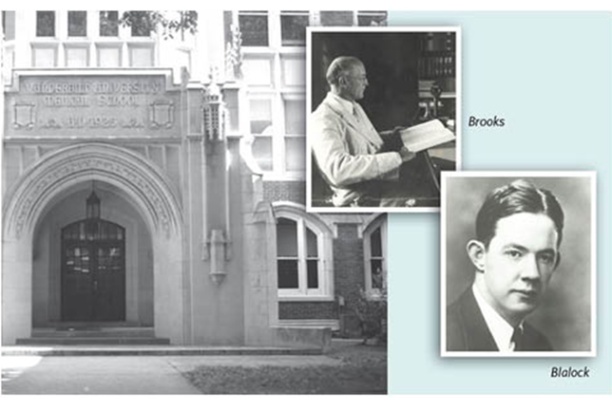Vanderbilt has a rich history in Pediatric Surgical training since 1925. Today, we are a children’s hospital ranked in all 10 discliplines evaluated by U.S. News & World Report and attracts top-flight pediatric surgical resident candidates.
Residency training in pediatric surgical diseases at Vanderbilt has its origins dating back to 1925. The first patient evaluated in the newly opened Vanderbilt University Hospital emergency department (1925) was a child presenting with advanced appendicitis. Operative logs show that Barney Brooks, the first Chair of Surgery at Vanderbilt, and Alfred Blalock, his first Chief Resident, managed that child and the bulk of pediatric surgical conditions in that era.
Other giants in American Surgery while faculty at Vanderbilt also made original and significant contributions to Pediatric Surgery before board approval as its own specialty. Specifically, Rollin A. Daniel, Jr. reported in Annals of Surgery (1944) his first successful primary repair of esophageal atresia and tracheoesophageal fistula (EATEF) in a newborn. However, Cameron Haight of Ann Arbor, MI had reported a month earlier in Annals his successful repair of EATEF, preferring a left thoracotomy. Although these cases occurred independently and almost simultaneously in date, Haight was credited historically with this coincidental accomplishment, yet Daniel would popularize the right chest, retropleural approach. Similarly, James A. Kirtley, Jr. published the first successful portoenterostomy for the “uncorrectable” form of biliary atresia in the American Surgeon (1954) 5 years ahead of Morio Kasai’s description. Remarkably, Kirtley’s patient lived 39 years with her native liver, bearing 3 children, before dying during an attempt at liver transplantation.
H. William Scott, Jr., Chair of Surgery from 1952-1982, performed the first successful, complete repair of tetralogy of fallot in 1955. Scott had received three years of pediatric surgical training under Drs. Ladd and Gross at Boston Children’s Hospital, which set the stage for sustained emphasis in the surgical care of children at Vanderbilt and nationally across his illustrious career.
Dr. Scott influenced many Surgery residents at Vanderbilt to pursue Pediatric Surgery, including such titans as James A. O’Neill, Jr. and Wallace W. Neblett, Jr., who with George Holcomb, Jr. (also a trainee of Drs. Ladd and Gross) grew the Department of Pediatric Surgery. With this esteemed foundation and history, Lovvorn, O’Neill, and Neblett established in 2007 a comprehensive residency training program in Pediatric Surgery.
